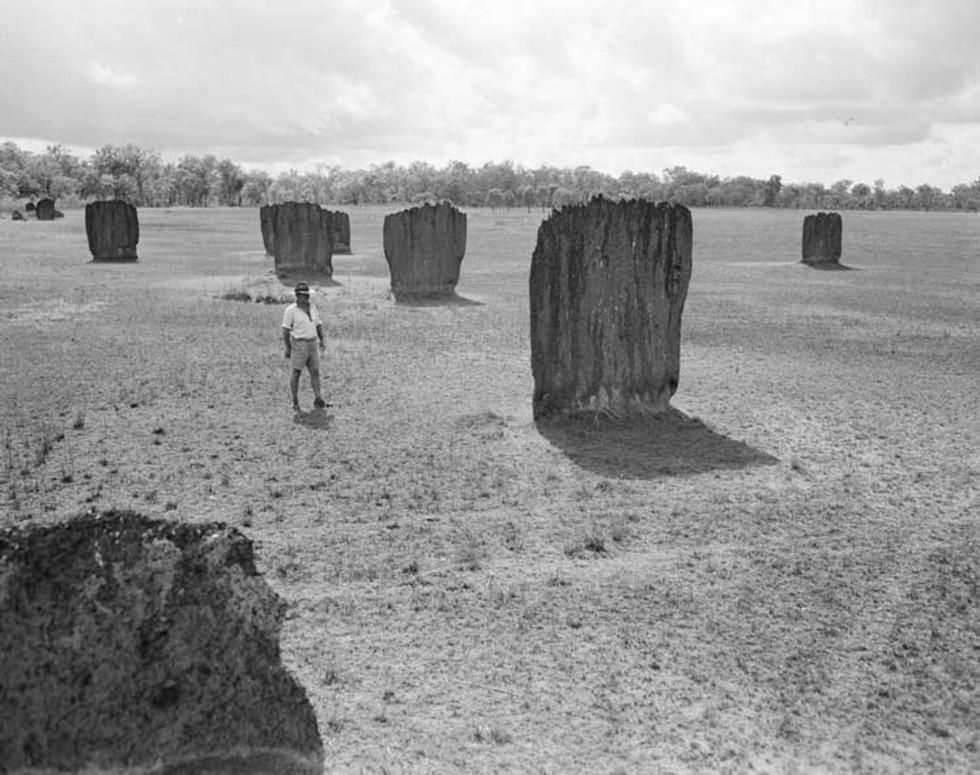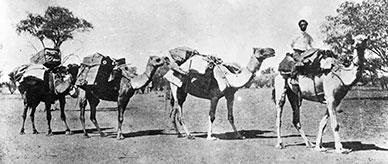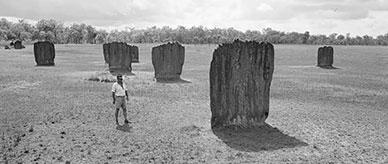


About this record
This is a black-and-white photograph taken in 1950 of a man standing on a plain in the Northern Territory of Australia. There are nine magnetic termite (white ant) towers around him, some of which appear to be twice his height.
Educational value
- Displays the spectacular tower-like structures or 'termitariums' that a species of termite Amitermes meridionalis build in the Northern Territory.
- Reveals the height of the termite towers – during the rainy season those parts of the structures at or just above the ground are typically inundated by monsoonal high water for weeks and the above-ground sections are particularly important for termite survival; termites are vulnerable to temperature change because the workers and the soldiers, which constitute the bulk of the population, have very thin transparent skins and so temperature control in the above-ground sections is critical.
- Shows shadows cast by the towers – Amitermes meridionalis align their mounds north–south to maximise exposure to the sun in the mornings and evenings when the air is cooler and to minimise exposure during the heat of the day; temperature measurements show that there may be up to 8 degrees Celsius difference in temperature between the sunny and shaded surfaces; in areas where windy conditions result in the eastern faces of mounds taking longer to warm, scientists have found the mounds may be positioned so the sun remains for longer on the eastern face.
- Illustrates the common alignment of all nine towers – scientists speculate that termites may use the Earth's magnetic field to position their towers.
- Depicts towers that contain millions of insects that act like great stationary herbivores feeding on plant material – Australia's equivalent of the herds of mobile herbivorous mammals of the African plains; as they eat their way through wood, leaf and stem, termites unlock the nutrients that the plants have accumulated and store them in their termitariums as insulating material and in their own bodies; without the activity of the termites, nutrient cycling, on which life depends, would be greatly reduced.
Acknowledgments
Learning resource text © Education Services Australia Limited and the National Archives of Australia 2010.
Related themes
Need help with your research?
Learn how to interpret primary sources, use our collection and more.


